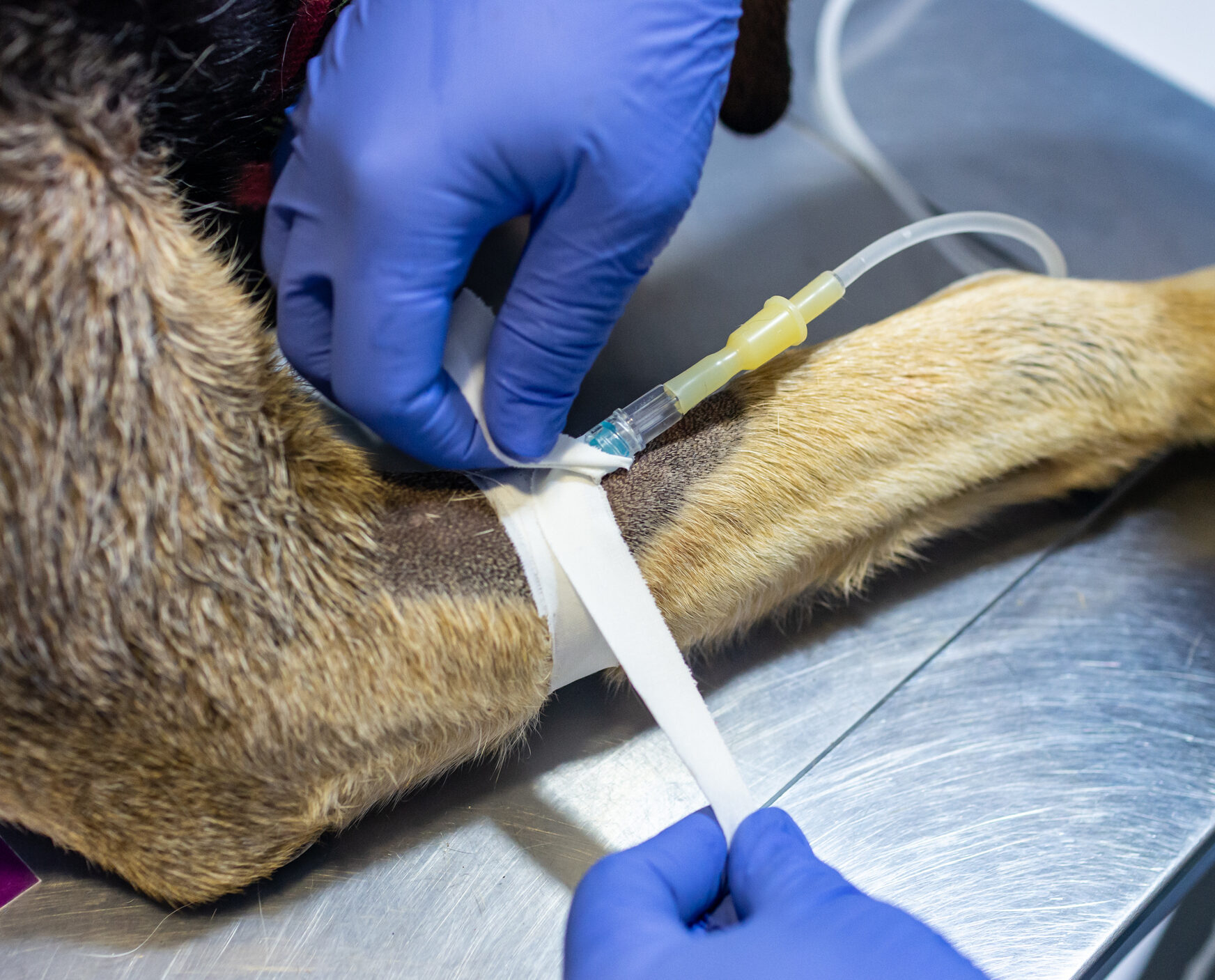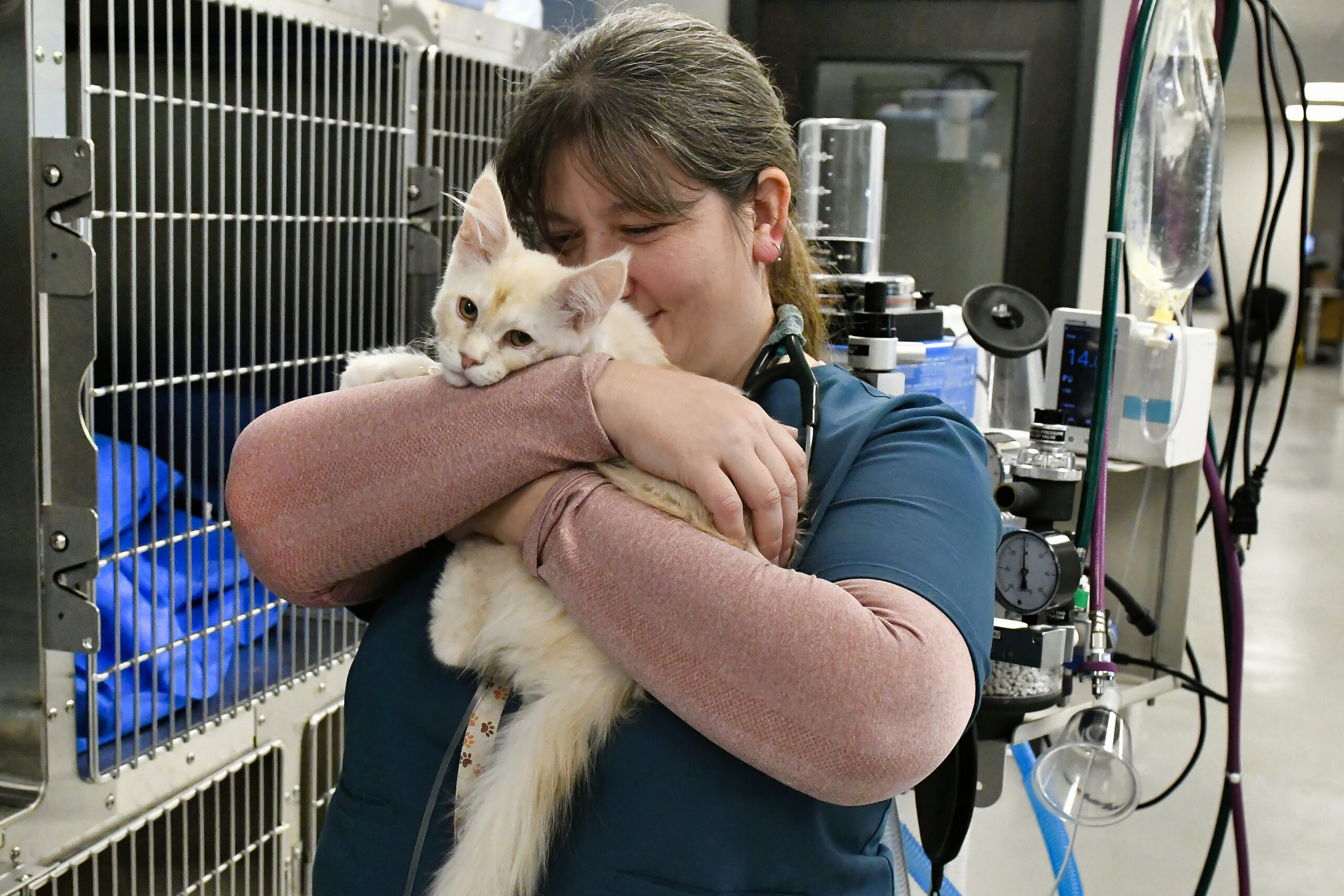
Veterinary oncology is the branch of veterinary medicine focused on the diagnosis, treatment, and management of cancer in animals. Just like in humans, cancer can affect various parts of the body. Treatment often requires a multi-modal approach, combining some or a few treatments such as surgery, chemotherapy, immunotherapy, radiation, and palliative care.
The most important thing to note is that cancer care in veterinary medicine aims not only to extend the lives of pets but also to ensure their comfort and quality of life during treatment. Here at Allied, we will guide you through the decision-making process to choose the option(s) that are right for your pet.
Lymphoma is one of the most common cancers seen in both dogs and cats. It originates in the lymphatic system, which is part of the body’s immune system. This cancer can affect lymph nodes, the spleen, liver, and other organs. In pets, lymphoma often presents as swollen lymph nodes, lethargy, weight loss, and decreased appetite. It’s highly responsive to chemotherapy, and while it may not be curable, treatment can significantly extend both lifespan and quality of life.
Mast cell tumors are a type of skin cancer that arises from mast cells, which are part of the immune system involved in allergic responses. These tumors can vary widely in appearance — from small, benign-looking lumps to large, ulcerated, and invasive masses. They can occur anywhere on the body but are most often found on the skin. Early detection and surgical removal are key, though more aggressive tumors may require chemotherapy, radiation, or additional surgery.
Osteosarcoma is the most common bone cancer in dogs, though it’s less common in cats. It typically affects the long bones of the legs but can occur in other bones as well. Osteosarcoma is aggressive and has a high likelihood of spreading (metastasizing) to the lungs and other areas. Symptoms include persistent lameness, swelling, and pain in the affected area. Treatment often involves amputation of the affected limb combined with chemotherapy to address metastatic disease.
Melanoma is a type of cancer that originates from pigment-producing cells (melanocytes). In pets, it’s most commonly found in the mouth, skin, and on the toes. Oral melanomas are particularly aggressive and can spread to the lymph nodes and lungs. Skin melanomas can range from benign to malignant. Treatment options depend on location and stage, and may include surgery, radiation therapy, immunotherapy, or chemotherapy.
Hemangiosarcoma is a cancer of the blood vessel lining, most commonly affecting the spleen, heart, liver, and skin. It’s often called a “silent killer” because it tends to grow without obvious symptoms until a tumor ruptures, causing internal bleeding. Common signs include sudden weakness, pale gums, difficulty breathing, and collapse. Treatment typically involves surgery to remove the tumor (if possible) and chemotherapy. Prognosis depends on how early the cancer is detected and treated.
TCC is the most common type of bladder cancer in dogs, though it can also occur in the urethra, prostate, and kidneys. It arises from the cells lining the bladder and tends to be invasive, affecting surrounding tissues. Signs include difficulty urinating, blood in the urine, frequent urination, and straining. Diagnosis is often made through imaging and biopsy. Treatment may involve a combination of surgery, chemotherapy, radiation, or palliative care to manage symptoms.
While a cancer diagnosis can feel overwhelming, there are more treatment options for pets today than ever before.
Our team will work closely with you to find the best path forward for your pet’s comfort and well-being.
While a cancer diagnosis can feel overwhelming, there are more treatment options for pets today than ever before. Our team will work closely with you to find the best path forward for your pet’s comfort and well-being.
To schedule an appointment with a veterinary oncology specialist, call (763) 463-9800.
Most of us have had an experience or know someone who has gone through chemotherapy. And while the overall treatment can be similar to human chemotherapy, there are important differences in how it’s administered and what side effects are seen.
Here’s a more detailed look:




In summary, while chemotherapy in pets shares some similarities with human chemotherapy, it’s also tailored to the needs and characteristics of the animal, with a strong emphasis on quality of life and minimizing side effects.
If your pet has been diagnosed with cancer, please call our Brooklyn Park hospital to schedule a consultation with our board-certified veterinary oncologist. There is no obligation to pursue treatment. This time will help you learn about the options for treatment, prognosis, and how much love your pet will receive if you choose treatment at Allied.